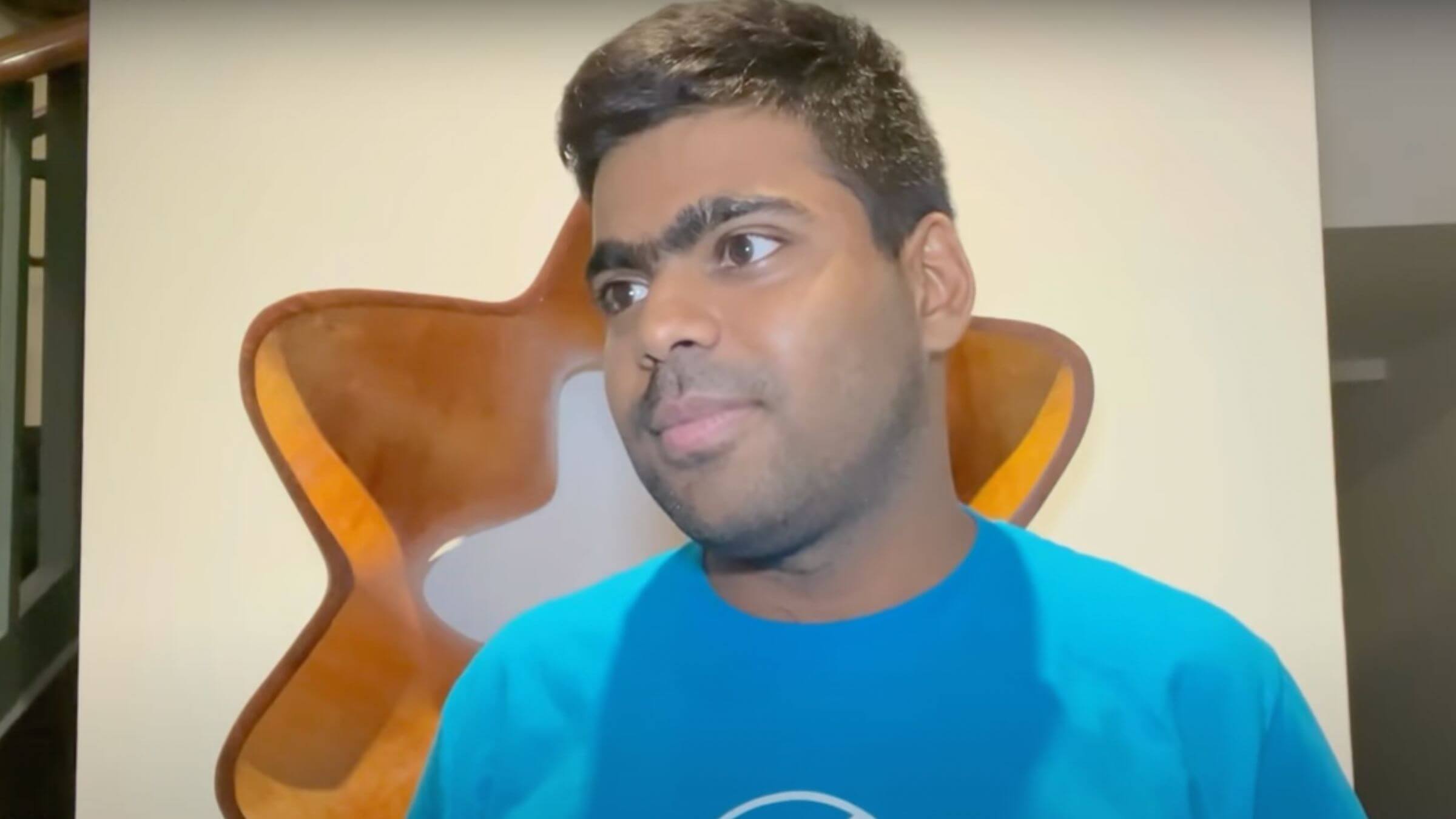VIDEO: Indian student takes his first in-person Yiddish class — and loves it
Duke University doctoral student Syed Habeeb Tehseen is now a fan of classic Yiddish literature.

Student Syed Habeeb Tehseen from India speaks with Moishele Alfonso Photo by Moishele Alfonso
Have you ever been back to your alma mater? Felt a rush of nostalgia and a bit of dejá vû?
This was my experience last week at the siem, the graduation ceremony, of the students who took the YIVO Intensive Yiddish Summer Program. YIVO may not be my alma mater in the traditional sense – it’s a summer program, not a university (although you can get college credit from Bard). But in the literal sense of the Latin phrase “alma mater”, or “nourishing mother”, it checks all the boxes.
When I attended in 2018, it was the first time I had ever formally studied Yiddish with other students in a classroom setting. It was a fundamental part of my Yiddish education and changed the trajectory of my life. I made Yiddishist friends from around the globe. For those six weeks at YIVO, Yiddish was, and still is, an international lingua franca.
Throughout the years, I’ve met Yiddish students from all over the world: Europe, Israel, Australia, and South America. But last week at YIVO’s siem was the first time I met someone from India. During our interview, I discovered that this student, Syed Habeeb Tehseen, had a story that was different, yet in some ways similar to my own.
My first impression of Habeeb was his amiable smile and his excellent Yiddish accent. His initiation into the language began like many of today’s students: with an online course during the pandemic.
He was living and studying in Delhi, India at the time, and took a course in Old Yiddish at Universität Rostock in Germany. Yes, he studied Old Yiddish (the Yiddish that was spoken and written in during the Middle Ages), online, in Germany. He learned the alef-beys (the Yiddish alphabet), discovered loshn-koydesh (Old Hebrew and Aramaic words), the basics of Old Yiddish and how to transcribe texts into Latin letters.
After this course, Habeeb followed the path of many: self-study, using both the standard Yiddish textbook — Uriel Weinreich’s College Yiddish and the more contemporary text, Yiddish: An Introduction to the Language, Literature and Culture by Sheva Zucker. He even tried to read Yiddish poetry, like Avrom Sutzkever’s Ver Vet Blaybn (Who Will Remain?) whose ingenious Yiddish phrases and metaphors couldn’t have been easy for him.
Now a doctoral student in Germanic Studies at Duke University, Habeeb saw the opportunity to study Yiddish in-person for the first time at YIVO and grabbed it. In this video you can hear how fluent his Yiddish is, as he talks about becoming a fan of the Yiddish classics.
One of the students in this year’s summer program, Shloyme (Seth) Vizel, has some real Yiddish yikhes (pedigree). His mother, Frieda Vizel, is a well-known tour guide of Williamsburg, home of the Satmar community in which she was raised. Shloyme himself was born in another Satmar community: Monroe, New York. One tell-tale sign is his slightly Yiddish accent.
The video also includes words of greeting from the Yiddish writer and former Forverts editor, Boris Sandler, as well as snippets of the stage performances, where the students got to display what they’ve learned.
A message from our CEO & publisher Rachel Fishman Feddersen
I hope you appreciated this article. Before you move on, I wanted to ask you to support the Forward’s award-winning journalism during our High Holiday Monthly Donor Drive.
If you’ve turned to the Forward in the past 12 months to better understand the world around you, we hope you will support us with a gift now. Your support has a direct impact, giving us the resources we need to report from Israel and around the U.S., across college campuses, and wherever there is news of importance to American Jews.
Make a monthly or one-time gift and support Jewish journalism throughout 5785. The first six months of your monthly gift will be matched for twice the investment in independent Jewish journalism.
— Rukhl Schaechter, Yiddish Editor